Winston
Lorenzo von Matterhorn
- Joined
- Jan 31, 2009
- Messages
- 9,560
- Reaction score
- 1,748
First, the absolutely awesome ultra high speed video:
[video=youtube;T9xSrnotXxU]https://www.youtube.com/watch?v=T9xSrnotXxU[/video]
Another one I've posted before, ostensibly meant to test nuke safety:
[video=youtube;fvqDj3me37o]https://www.youtube.com/watch?v=fvqDj3me37o[/video]
The outstanding article:
Get To Know America's Long Serving B61 Family Of Nuclear Bombs
The first variant entered service 50 years ago and with a new version in development the B61 will continue to serve for decades to come.
MARCH 15, 2018
https://www.thedrive.com/the-war-zo...icas-long-serving-b61-family-of-nuclear-bombs
Tiny exceprts from long article:
The older versions:
The United States first started work on the weapons in 1961 as a result of the need for a new, more aerodynamic nuclear bomb that was better suited for use on then new high-performance jet aircraft, some of which were capable of reaching supersonic speeds.
Los Alamos National Laboratory in New Mexico, which the Department of Energy's National Nuclear Security Administration (NNSA) oversees today, built the first prototypes, initially known as TX-61s, in 1963. Difficulties during the engineering design phase meant the first B61-0s did not enter full-scale production until five years later.
Over the next decade, U.S. nuclear engineers steadily improved the capability, reliability, and safety of the design. All of the B61s came in two basic flavors, strategic versions for larger city-size targets and tactical variants for smaller site and even potentially for battlefield use against enemy troop concentrations, with the only real differences being in the available, selectable yields. Since most of the exact information is classified, open sources often disagree, but what follows is based on our best accounting of the information available.
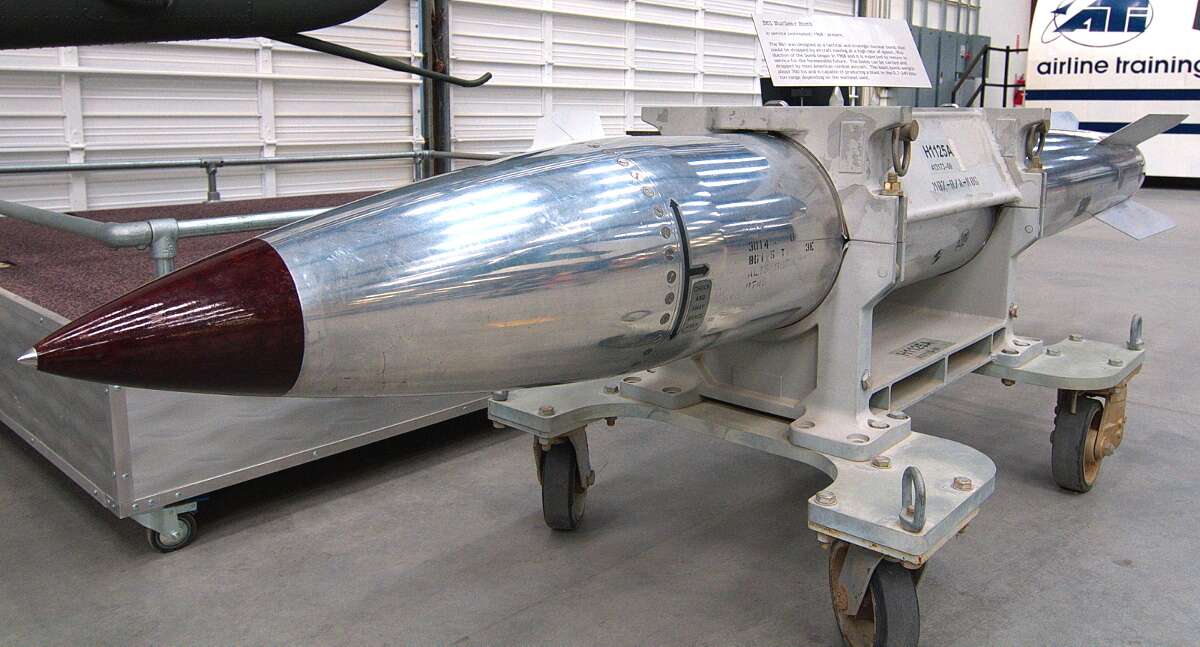
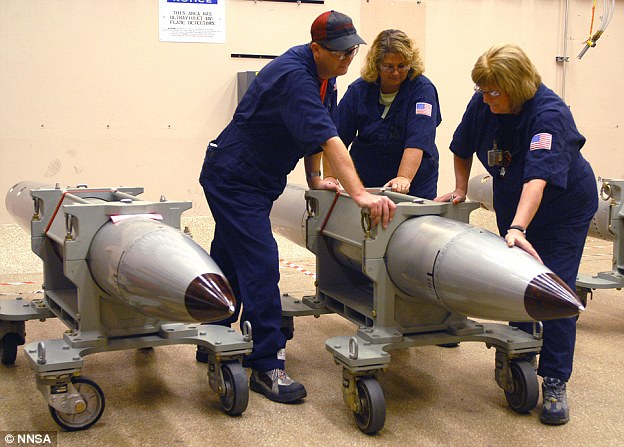
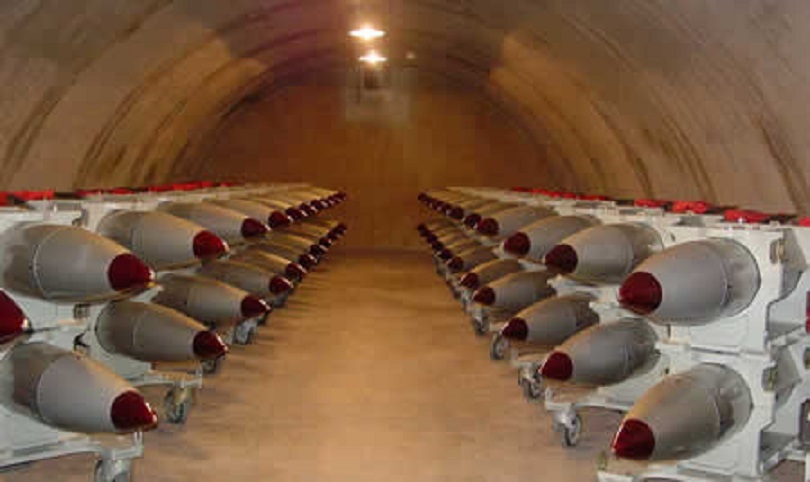
Newer versions:
The B61-12 has been in development since at least 2011 and will be the first in the series to feature a precision guidance capability. They will have a GPS and inertial navigation system (INS)-directed tail kit and strakes along the weapons main body similar in form and function to those on conventional Joint Direct Attack Munitions (JDAM) bombs.
The weapons thermonuclear warhead will reportedly have a maximum yield of approximately 50 kilotons, but personnel on the ground will almost certainly be able to further reduce that using a so-called dial-a-yield feature that effectively limits the extent of the nuclear reaction in the "physics package" at the warhead's core when the weapon detonates. Some older B61s have settings as low as 0.3 kilotons 50 times less powerful than Little Boy, the bomb the United States dropped on Hiroshima, Japan in 1945.
The U.S. military expects to finish production of the B61-12s which experts believe will total between 400 and 500 bombs and replacing the existing types by the end of 2024, at which point, this series of bombs will have been in service for more than 55 years.
The B61-12 would make an excellent scale rocket project or, better yet, a KIT (hint-hint). Heck, there was an Estes kit of the Paveway, why not this?:
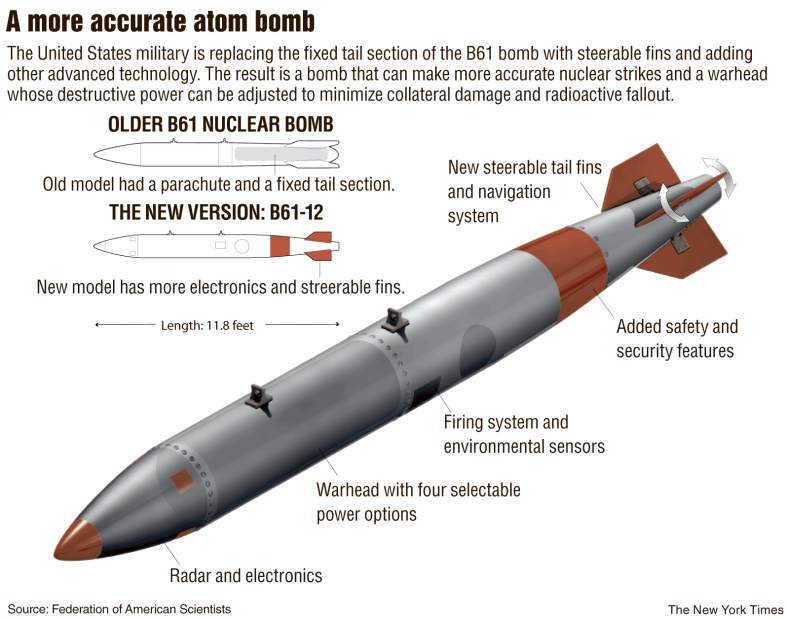
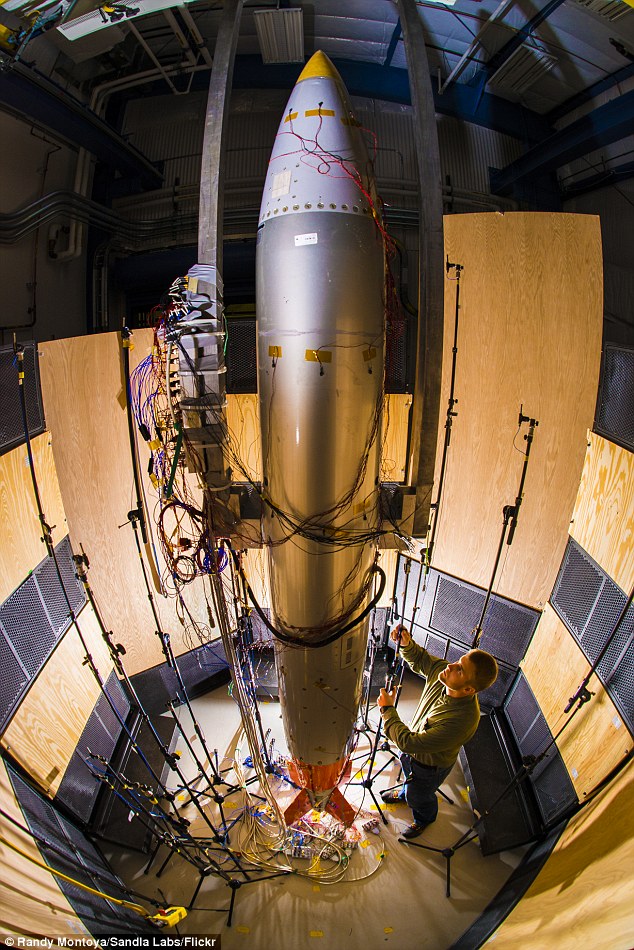
The most recent operational variant, the B61-11, entered service in 1997 and is the first to dramatically differ in form, as well as function. The U.S. military treats this version as a combination tactical and strategic bomb even though its based on the B61-7 and reportedly has a single, maximum yield of approximately 340-400 kilotons.
The bigger difference, though, is that it has a significantly reinforced shell, possibly with a depleted uranium penetrating nose section, a delay fuzing system, and a booster rocket motor in the rear, all so it can break into deeply buried, hardened facilities. There are less than 100 of these bombs in existence, according to publicly available data, and the United States more or less built them with one specific target in mind.
I can't find decent photos of this one:
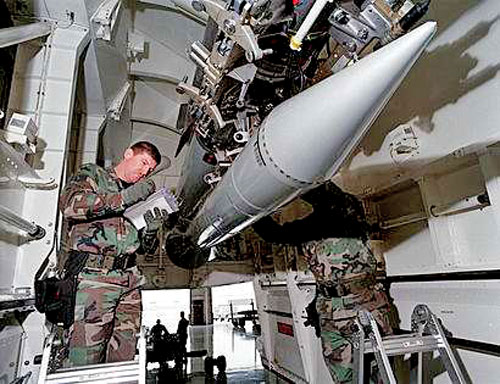
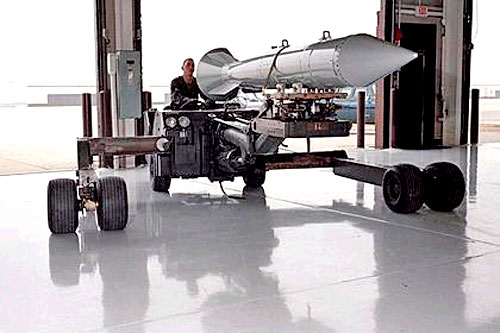
[video=youtube;T9xSrnotXxU]https://www.youtube.com/watch?v=T9xSrnotXxU[/video]
Another one I've posted before, ostensibly meant to test nuke safety:
[video=youtube;fvqDj3me37o]https://www.youtube.com/watch?v=fvqDj3me37o[/video]
The outstanding article:
Get To Know America's Long Serving B61 Family Of Nuclear Bombs
The first variant entered service 50 years ago and with a new version in development the B61 will continue to serve for decades to come.
MARCH 15, 2018
https://www.thedrive.com/the-war-zo...icas-long-serving-b61-family-of-nuclear-bombs
Tiny exceprts from long article:
The older versions:
The United States first started work on the weapons in 1961 as a result of the need for a new, more aerodynamic nuclear bomb that was better suited for use on then new high-performance jet aircraft, some of which were capable of reaching supersonic speeds.
Los Alamos National Laboratory in New Mexico, which the Department of Energy's National Nuclear Security Administration (NNSA) oversees today, built the first prototypes, initially known as TX-61s, in 1963. Difficulties during the engineering design phase meant the first B61-0s did not enter full-scale production until five years later.
Over the next decade, U.S. nuclear engineers steadily improved the capability, reliability, and safety of the design. All of the B61s came in two basic flavors, strategic versions for larger city-size targets and tactical variants for smaller site and even potentially for battlefield use against enemy troop concentrations, with the only real differences being in the available, selectable yields. Since most of the exact information is classified, open sources often disagree, but what follows is based on our best accounting of the information available.


Newer versions:
The B61-12 has been in development since at least 2011 and will be the first in the series to feature a precision guidance capability. They will have a GPS and inertial navigation system (INS)-directed tail kit and strakes along the weapons main body similar in form and function to those on conventional Joint Direct Attack Munitions (JDAM) bombs.
The weapons thermonuclear warhead will reportedly have a maximum yield of approximately 50 kilotons, but personnel on the ground will almost certainly be able to further reduce that using a so-called dial-a-yield feature that effectively limits the extent of the nuclear reaction in the "physics package" at the warhead's core when the weapon detonates. Some older B61s have settings as low as 0.3 kilotons 50 times less powerful than Little Boy, the bomb the United States dropped on Hiroshima, Japan in 1945.
The U.S. military expects to finish production of the B61-12s which experts believe will total between 400 and 500 bombs and replacing the existing types by the end of 2024, at which point, this series of bombs will have been in service for more than 55 years.
The B61-12 would make an excellent scale rocket project or, better yet, a KIT (hint-hint). Heck, there was an Estes kit of the Paveway, why not this?:


The most recent operational variant, the B61-11, entered service in 1997 and is the first to dramatically differ in form, as well as function. The U.S. military treats this version as a combination tactical and strategic bomb even though its based on the B61-7 and reportedly has a single, maximum yield of approximately 340-400 kilotons.
The bigger difference, though, is that it has a significantly reinforced shell, possibly with a depleted uranium penetrating nose section, a delay fuzing system, and a booster rocket motor in the rear, all so it can break into deeply buried, hardened facilities. There are less than 100 of these bombs in existence, according to publicly available data, and the United States more or less built them with one specific target in mind.
I can't find decent photos of this one:








